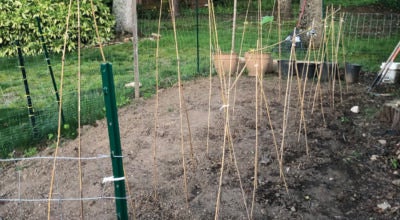COLUMN: Weed management tips for your pastures and hay fields
Published 10:58 am Tuesday, March 23, 2021
|
Getting your Trinity Audio player ready...
|
We are starting to see pastures and hay fields a little greener here in the last few weeks, and with growing grass comes growing weeds. The presence of weeds in pastures and hay fields not only affect your forage crop, but the production of your livestock as well.

Katelyn Stegall
The first step in weed management is knowing what a weed is. While this may seem obvious, it is always good to have a refresher. A weed is any plant growing somewhere you do not want it to grow. You will always have some sort of weed in your pastures and hay fields, it is impossible to have a stand of grass free of any voluntary plants.
This being said, it is important to have a plan for weed management, as weeds decrease the yield and quality of the forages you are trying to grow, and hinder the hay drying process. Some weeds can also cause injury or death to livestock species if they are ingested in toxic levels.
So, where do you start with weed management? The first and arguably most important step in weed management is identifying the weed. It is much easier to control a weed if you know what you are dealing with. The following link has several weeds common to North Carolina to help with weed identification: https://www.turffiles.ncsu.edu/weeds-in-turf/
Once you know which weeds you are trying to control, there are three different methods of weed control to consider:
1) Cultural Control — Cater to the forages you are trying to grow. Take soil samples from your pastures and fertilize and lime them as recommended from test results. This will give the grasses you are trying to grow the best growth environment, which makes a much more competitive environment for the weeds. Helping the desired plants grow to the best of their ability is most important in cultural weed control.
2) Biological Control — Biological control of weeds is a much more involved and time consuming means of weed control. It is a relatively new approach to weed management and involves introducing certain plants, insects, or herbivores to keep weeds at bay. There is still much to be learned about biological weed control.
3) Chemical control — There are several things to be considered when using a herbicide to control weeds. First, as stated earlier, weed ID is the most important step here. You need to be sure that you are spraying a herbicide that will be effective against the weeds you are trying to control. Timing is also critical for control of weeds. They may be sprayed any time to kill existing weeds, but for lasting control over certain types of weeds, herbicides are best used at certain times of the year. Contact your extension office with assistance with weed ID and timing of herbicide application.
Again, it is important that you use the correct herbicide to reach your weed management goals. Also to note, pay close attention to the label especially when it comes to grazing and hay restrictions. Remember when it comes to any pesticide, the label is the law.
For questions about hay and pasture weed control, contact Livestock Extension Agent Katelyn Stegall at 704-983-3987 or katelyn_stegall@ncsu.edu.



